[Editor: This is the second article in a series of adaptations from Jeffrey M. Bradshaw’s recent talk at the “Temple on Mount Zion” Conference, sponsored by the Interpreter Foundation (www.mormoninterpreter.com). Read Part One: Taking the Stories of Adam, Eve, and Noah Seriously here.]
John Lundquist describes the ancient expectation that temple plans are to be received by revelation. For example:[1]
Gudea of Lagash was visited in a dream in a temple of Lagash and shown the plan of the temple by a goddess, who gave him a lapis lazuli tablet on which the plan of the temple was written.[2] Perhaps the best example of this aspect of temple building is the Sinai episode itself, in which, according to D. N. Freedman, “this heavenly temple or sanctuary with its throne room or Holy of Holies where the deity was seated on his cherubim throne constituted the [pattern (Hebrew tabnt)] or structure seen by Moses during his sojourn on the same mountain.”[3]
Thus the heavenly temple became the pattern for the earthly Tabernacle built by Moses.
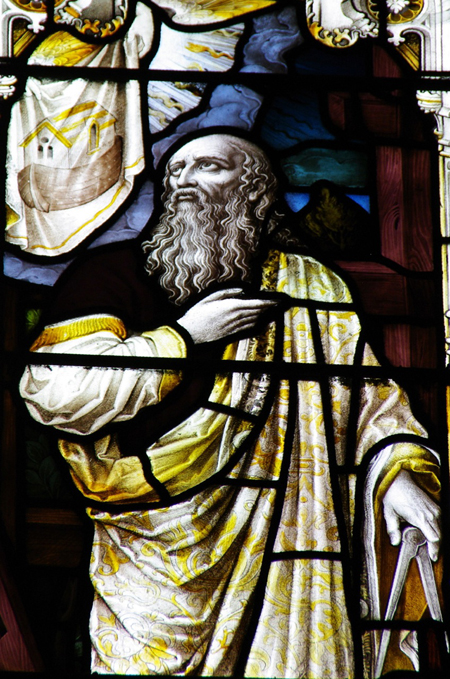 Figure 1. Stephen T. Whitlock, 1951-: Noah Sees the Ark in Vision[4]
Figure 1. Stephen T. Whitlock, 1951-: Noah Sees the Ark in Vision[4]
It is significant that, apart from the Tabernacle of Moses[5] and the Temple of Solomon,[6] Noah’s Ark is the only man-made structure mentioned in the Bible whose design was directly revealed by God.[7] In this detail from a window of the Holy Trinity Church in Stratford-upon-Avon, England, God shows the plans for the Ark to Noah just as He later revealed the plans for the Tabernacle to Moses. The hands of Deity hold the heavenly curtain as Noah, compass in his left hand, regards intently.
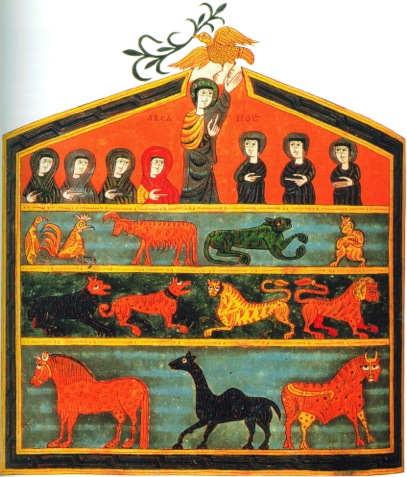

Parallels between the Ark and the Tabernacle
Like the Tabernacle, Noah’s Ark “was designed as a temple.”[9] The Ark’s three decks suggest both the three divisions of the Tabernacle and the threefold layout of the Garden of Eden.[10] Indeed, each of the three decks of Noah’s Ark was exactly “the same height as the Tabernacle and three times the area of the Tabernacle court.”[11] The same Hebrew word (mikseh) was used for the animal skin covering of the Ark and that of the Tabernacle.[12]


Further strengthening the association between the Ark and the Tabernacle is the fact that the Hebrew term for Noah’s Ark, tevah, later became the standard word for the Ark of the Covenant in Mishnaic Hebrew.[14] In addition, the Septuagint used the same Greek term, kibotos, for both Noah’s Ark and the Ark of the Covenant.[15] The ratio of the width to the height of both these arks is 3:5.[16] John Tvedtnes takes tevah as a borrowing from an Egyptian term that can have the meaning of “shrine”:[17] “As such, it is the small “house” in which the statue of the god is placed and in which it can be carried in procession on the festivals.”
The shrine in such processions would have functioned similarly to the Ark of the Covenant in corresponding Jerusalem temple rites that celebrated the “conquering power over the primeval waters.”[18]
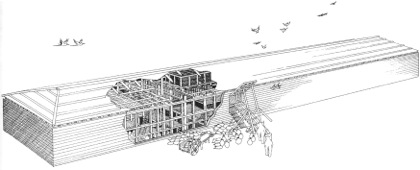

Marking the similarities between the shape of the Ark of the Covenant and the chest-like form of Noah’s Ark, Westermann describes Noah’s Ark as “a huge, rectangular box, with a roof.”[20] Unlike the drawing shown here, the roof was probably flat along the whole length of the vessel.[21] The biblical account makes it clear that the Ark “was not shaped like a ship and it had no oars,” “accentuating the fact that Noah’s deliverance was not dependent on navigating skills, [but rather happened] entirely by God’s will,”[22] its movement solely determined by “the thrust of the water and wind.”[23] Likewise, whether the dimensions of the seven-storied ark (or “temple”[24] ) in the Mesopotamian story of Gilgamesh,[25] are imagined to represent the shape of “a sea-going ziggurat”[26] or instead a “floating microcosm“[27] in the form of a gigantic cube, the nautical improbability of such a vessel affirms the miraculous nature of the rescue.
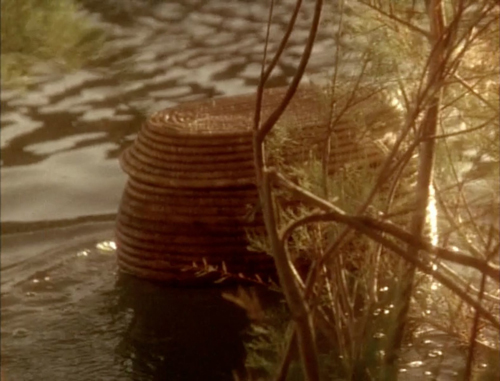

Consistent with the emphasis on deliverance by God rather than through human navigation, the Hebrew word used in Genesis for ark (tevah) reappears for only once in the Bible: in the story of the infant Moses, whose deliverance from death was also made possible by a free-floating watercraft-specifically a reed basket.[29] Below we will discuss the likelihood that reeds were also used as part of the construction materials for Noah’s ark.


Besides the resemblances in form between the Ark and the Tabernacle, there are other similarities. For example, scholars have noted that, in the Mesopotamian story of Gilgamesh, there is a similarity of the loading of the ship to the loading of goods into a temple.[31] Likewise, Sailhamer observes that the account of the entry of the animals into the Ark seems to have been shaped so as to highlight parallels with the Tabernacle:[32]
Both narratives… emphasize that entry into the Ark/Tabernacle is to be accompanied by an animal offering. At the close of the description of the building of the Tabernacle,[33] when the completion of the Tabernacle has been recorded,[34] the command is given for it to be set up and readied for use.[35] When it is readied and the glory of the Lord has filled the Tabernacle,[36] provisions are made for “drawing near” to the Tabernacle.[37] One may “draw near” only by bringing an animal offering that is “unblemished” (tamim).[38] Thus just as the completed Tabernacle can be entered only with the “unblemished animals” as an offering, so Noah’s entry into the Ark is tied to his taking with him “seven pairs” of every clean animal.
[39]
More generally, Morales discusses the centrality of the theme of entering and leaving the Ark as reason “to suspect an entrance liturgy ideal at work,”[40] with all “entries’ as being via Noah,”[41] the righteous and unblemished priestly prototype.[42] When, at last, “the Lord shut him in”[43] the Ark, both the day “of salvation of the righteous (by entrance)” and “the judgment of the wicked (by barred entrance)” had come.[44]
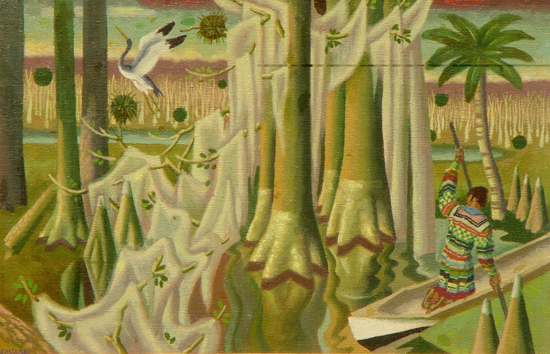

With respect to the construction materials used to make Noah’s Ark, Genesis 6:14 reads:
Make thee an ark of gopher wood; rooms shalt thou make in the ark, and shalt pitch it within and without with pitch.
The referent for the term “gopher wood”-unique in the Bible to Genesis 6:14-is uncertain.[46] Most modern exegetes envisage a resinous timber, and some take the Hebrew term gopher to mean cypress wood specifically.[47] Because it is resistant to rot, the cypress tree was the main wood used in ancient times for the building of ships[48] and the construction of coffins.[49]
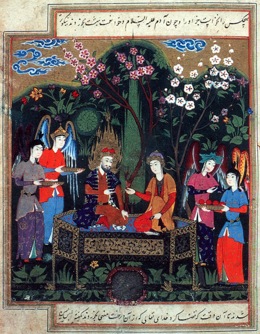

The possibility of conscious rhyming wordplay in the juxtaposition of gopher and kopher (“pitch”) within the same verse cannot be ruled out. As Harper notes, the word kopher might have evoked, for the ancient reader, “the rich cultic overtones of kaphar ransom’ with its half-shekel temple atonement price,[54] kapporeth mercy seat’ over the Ark of the Covenant,[55] and the verb kipper to atone’ associated with so many priestly rituals.”[56] Some of these rituals involve the action of smearing or wiping, the same movements by which pitch is applied.[57] Noting the cultic correspondences among these descriptive terms for the Ark and the Tabernacle, Harper observes:[58] “The [Ark] becomes the place of mercy and ransom when the waters cover over and atone for the violence of the world.” Just as God’s presence in the Tabernacle preserves the life of His people, so Noah’s Ark preserves a righteous remnant of humanity along with representatives of all its creatures. Thus Westermann concludes:[59] “The parallel between the Ark and the Tabernacle has a profound meaning.”


In the Mesopotamian stories of Atrahasis[61] and Gilgamesh,[62] the flood hero obtains construction materials for the building of a boat by tearing down a reed hut. The basic construction idea of such huts is that poles of resinous wood would have framed and supported woven reed mats.[63] The reed mats would be stitched to the hull and covered with pitch to make them waterproof.[64] As seen in this photograph, these building techniques are still in use today.[65]
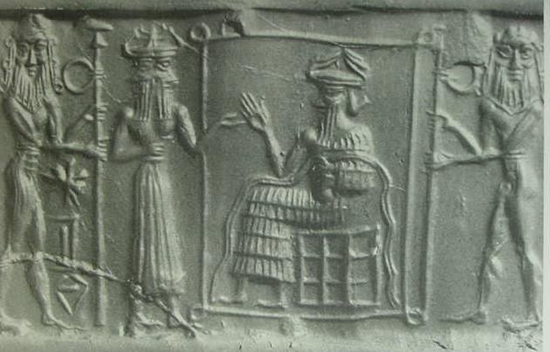

Although reed huts may sometimes serve as secular enclosures, references to them in Atrahasis,[67] Gilgamesh,[68] and Enuma Elish[69] clearly point to their ancient use as sanctuaries. Oppenheim notes that these structures, which have been used since the fourth millennium BC, “left sundry traces in the ritual practices, the sacred furniture of the later [Mesopotamian] temples, as well as in the material features of their architecture.”[70] Further connecting these sanctuaries to the themes of the flood story, Oppenheim ties the origins of reed huts in Mesopotamia to those of early boats and naval processions that paraded from one temple to another.[71] In addition, McCann argues for archaeological connections to Egyptian New Kingdom ritual boats, where the reed shrine “encases the hull; that is, only stern and sternpost appear.”[72] Drawing from the early discussions of Hilprecht on the magur– or makurru-boat of Mesopotamia that was “especially effective during the [times of] deluge, when its exclusive purpose was… to protect men and beasts against the waters from below and the pouring rain from above,”[73] Nibley discussed parallels with watercraft described in Mesopotamian and biblical flood stories as well as the ships of the Jaredites.[74] From a variety of ancient sources, he also documented traditions of “shining stones,” including those said to have been found both in the Jaredite boats and also in the Ark of Noah.[75]
In this figure we see Enki seated in his rectangular sanctuary made of reeds. He presided both as the god of wisdom and of the freshwater ocean that existed under the land, called the Abzu or Engur.[76] In some parts of the ancient Near East, mortal kings and priests entered into reed sanctuaries in order to commune with the gods in a manner that was analogous to the entry of Israelite high priests into the Holy of Holies in Israelite temples.
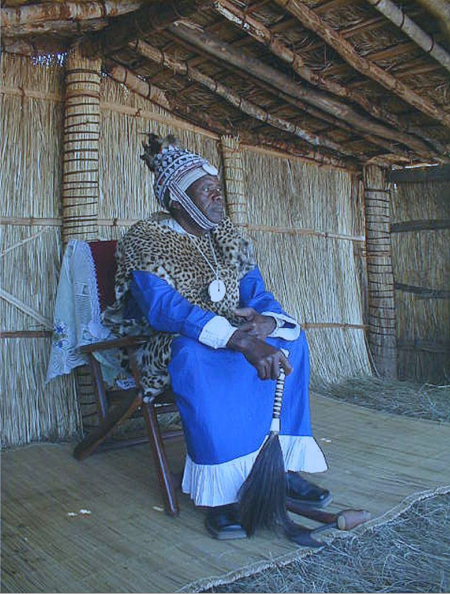

In this photograph the Nkoya king is seated at the ceremonial architecture built of reeds during the Kazanga festival. Van Binsbergen,[78] who has documented “myth diffusion from the ancient Near East into central Africa… draws …close comparison between the oral traditions of the Nkoya in the Likota lya Bankoya[79] and… Mesopotamian mythic accounts of the theophany at the reed hut temple.”[80] In further explanation of the king’s role in the ancient Near East, Thorkild Jacobsen writes that this form of communication with the gods:[81]
… is intimately connected with the king’s role as diviner, seer, and prophet. This side of kingship was very important in older times; the king was, as priest-king, mediator between the people and the gods, and by discovering the gods’ will and obeying it, he ensured peace and prosperity.
In a Sumerian account commonly called the Eridu Genesis, Ziusudra, one name used for the Mesopotamian flood hero, enters into the “reed hut… temple,”[82] where he stands “day after day” listening to the “conversation” of the divine assembly.[83] Eventually, Ziusudra hears the deadly oaths of the council of the gods following their decision to destroy mankind by a devastating flood. Regretting the decision of the divine assembly, the god Enki contrives a plan to warn Ziusudra and to instruct him on how to build a boat that will save him and his family. Evoking ancient Near East parallels in which the gods whisper their secrets to mortals standing on the other side of temple screens or partitions separating the divine and human realms,[84] Enki conveys his warning message privately through the thin wall of Ziusudra’s reed sanctuary:[85]
And as Ziusudra stood there beside it he went on hearing:
“Step up to the wall to my left and listen!
Let me speak a word to you at the wall and may you grasp what I say,
May you heed my advice!
Other accounts relate that Enki instructed Ziusudra to tear down the reed hut temple and to use the materials to build a boat.[86]


The Mesopotamian flood stories list three kinds of boat-building materials: wood timbers, reeds, and pitch.[88] The list in the Bible is identical, except that it gives the second item as “rooms” rather than “reeds.” Concluding “that the apparent lack of the reed hut or primeval shrine in the Genesis flood account demands closer inspection,”[89] Jason McCann observes,[90] as does Elizabeth Harper,[91] that re-pointing the vowels in the corresponding Hebrew term in the Bible, which was originally unmarked, would lead to an alternate translation signifying an ark that was “woven-of-reeds.” Lexical findings from elsewhere in the Bible, along with the earlier conclusions of Godfrey Rolles Driver,[92] argue in defense of the following New Jerusalem Bible translation of Genesis 6:14:[93]
Make yourself an ark out of resinous wood. Make it with reeds and caulk it with pitch inside and out.
Thus, by a translation that recognizes “reeds,” not “rooms” as the second element in the building materials for Noah’s Ark, a puzzling inconsistency with the Mesopotamian accounts is resolved at the same time further connecting the Ark with the temple.
The next article in this series will discuss Creation and temple themes in the story of the Flood, where temple parallels can be found not only with the structure of the Ark but also with its function.
This and related subjects will be the focus of a forthcoming book of scripture commentary, “In God’s Image and Likeness 2: Enoch, Noah, and the Tower of Babel.” This book, which is co-authored with David J. Larsen, will appear in late 2013 or early 2014. See www.templethemes.net for other writings and presentations by the author.
Please click here to see the Endnotes and References

















